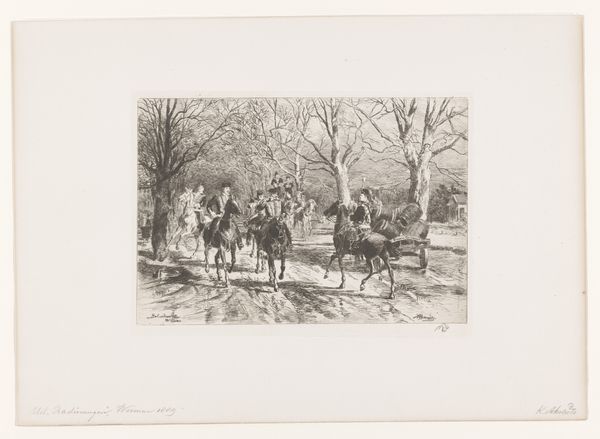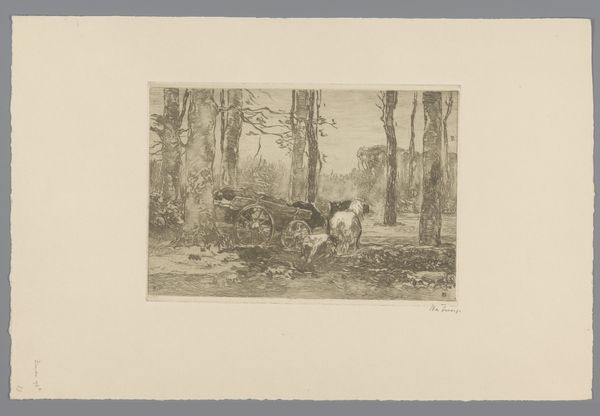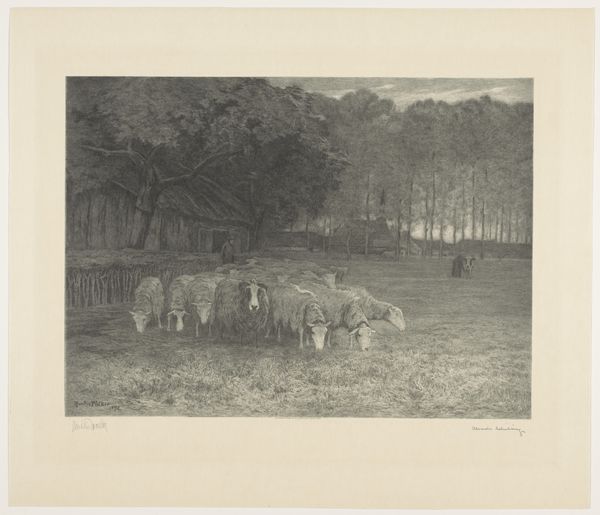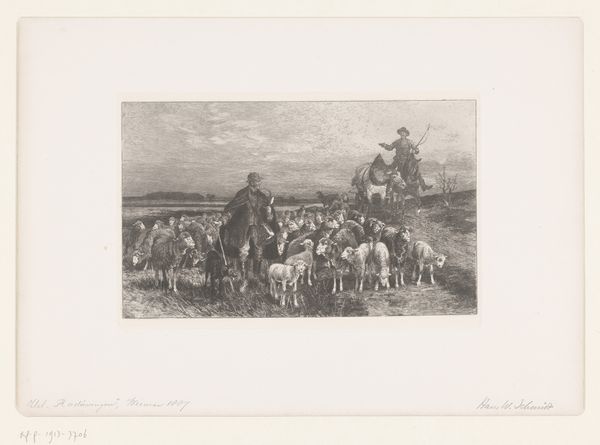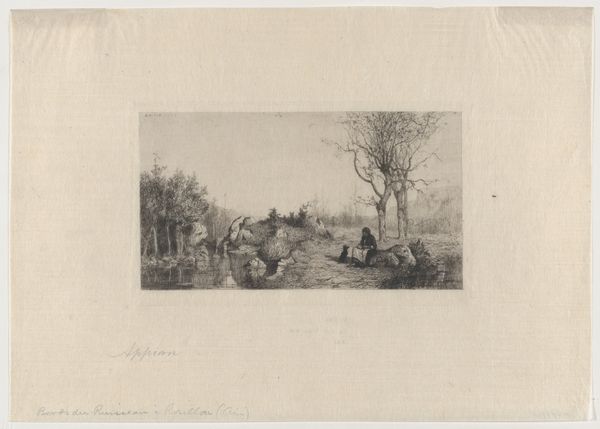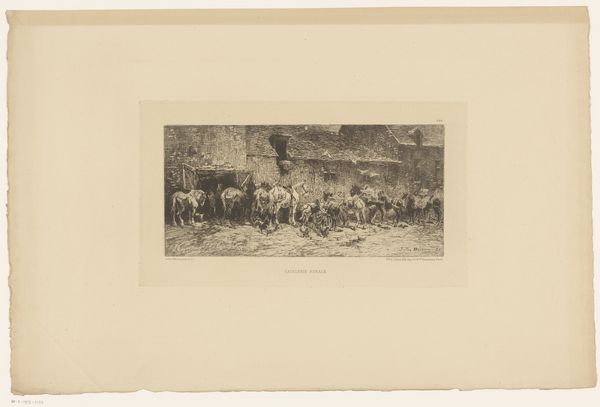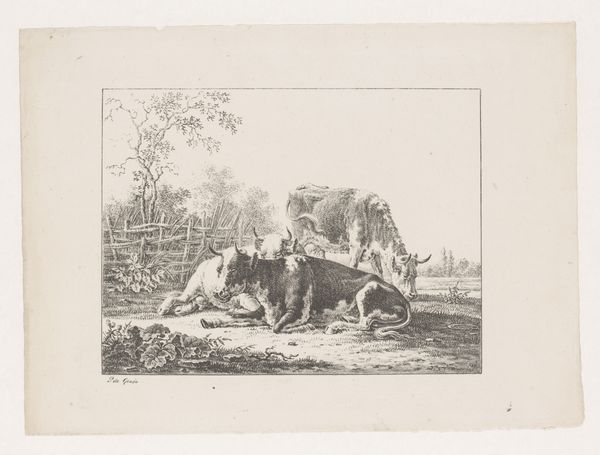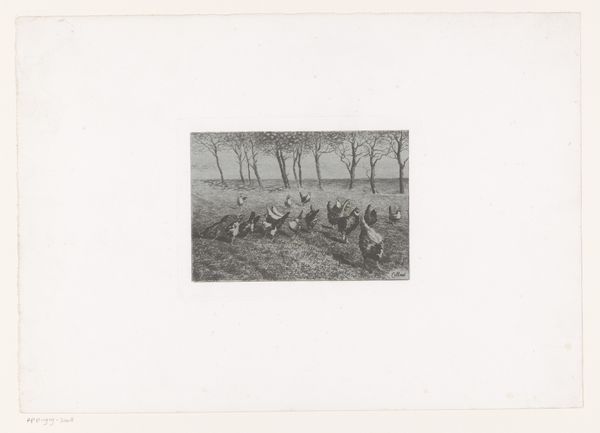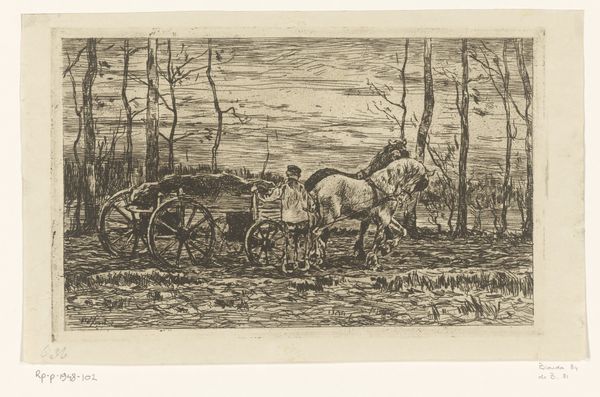
print, etching
# print
#
etching
#
landscape
#
genre-painting
#
realism
Dimensions: height 217 mm, width 295 mm
Copyright: Rijks Museum: Open Domain
Curator: This is "Resting Hunters," a print by Hans W. Schmidt from 1889. The artist employed an etching technique to bring this scene to life. What strikes you first? Editor: Immediately, it feels like a tableau of status. The resting hunters with their horses and hounds—they all symbolize wealth and privilege in the landscape. Curator: Absolutely, it's a genre painting in that sense. Consider the labor involved, not just in the hunt itself, but also in managing the land to accommodate this type of leisure. Etchings are often multiples, they allow for dissemination. Who would buy such images and what message did that disseminate? Editor: The hunting imagery resonates with traditional symbolism too. The dogs evoke fidelity and obedience, mirroring the societal expectations of loyalty and service, particularly prevalent in aristocratic settings. The forest itself can often represent the unconscious and a testing ground. Do you agree? Curator: To a point. The artist depicts the specific tools and materials: the etching plate, the acids used to create the image, the paper on which it is printed. It grounds the fantasy to me. The mass reproducibility alters the symbolism for me because suddenly it’s an industrial transaction with many consumers, as opposed to an aristocratic family commissioning an oil painting of themselves on a hunt. Editor: So the mass-produced print changes the symbolic significance? That's interesting. Still, beyond the mass production element, consider the choice of hunting: traditionally a royal sport that was then emulated by other noble families. Curator: What I also find fascinating is that an etching requires a significant level of skill and time to produce; it is both artisanal and able to make multiples unlike other forms. So while the image might resonate with aristocratic values, it’s delivered in a democratic format for more modest incomes. Editor: Ultimately, this detailed composition brings out ideas about social hierarchies, perhaps through visual accessibility in 1889 when ideas and meanings spread widely due to technical printing developments. Curator: I think examining "Resting Hunters" exposes a critical interplay between material realities and deeply entrenched cultural signs and messages that spread to mass audiences.
Comments
No comments
Be the first to comment and join the conversation on the ultimate creative platform.


